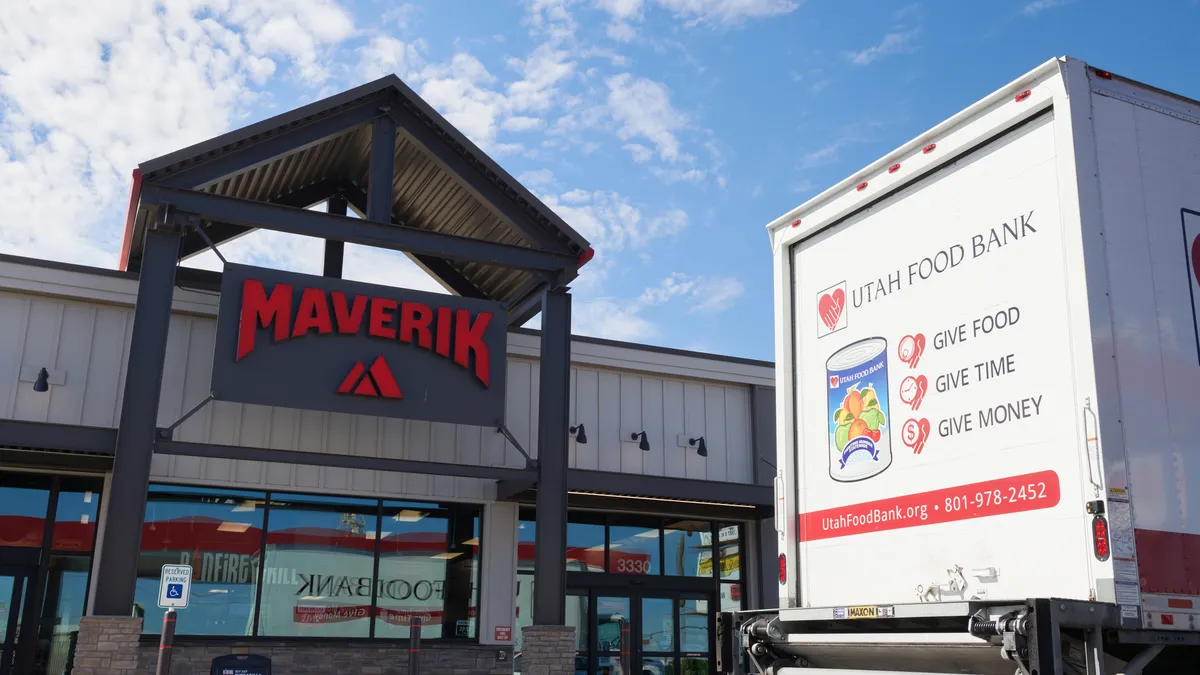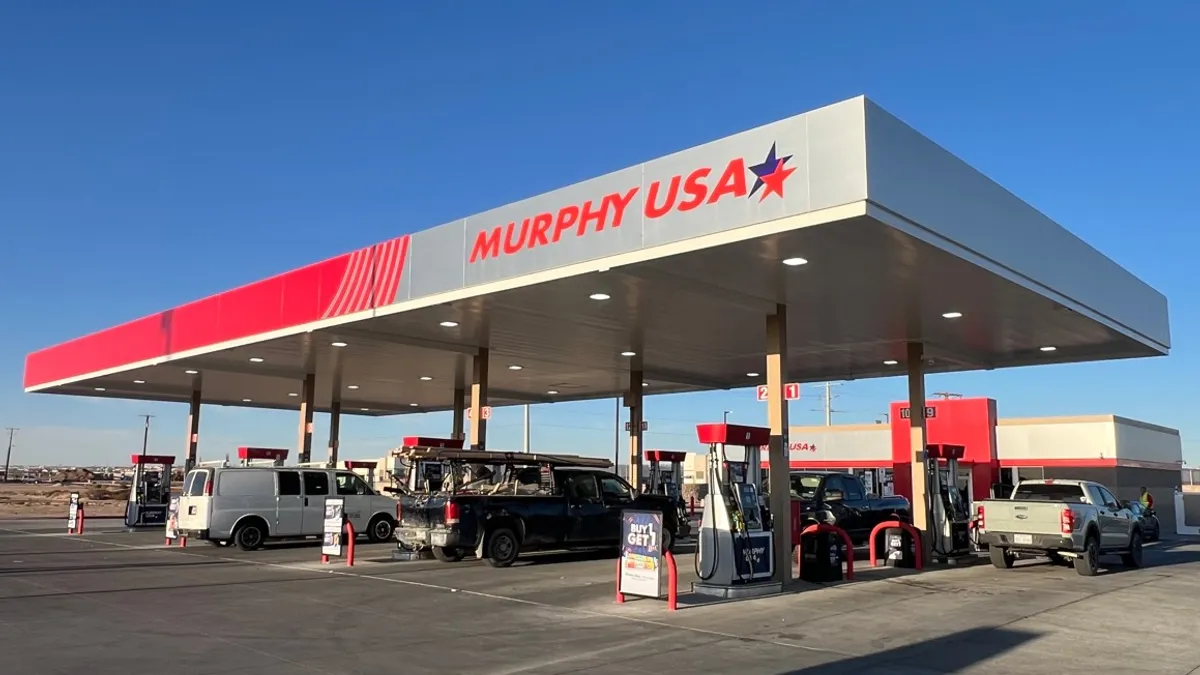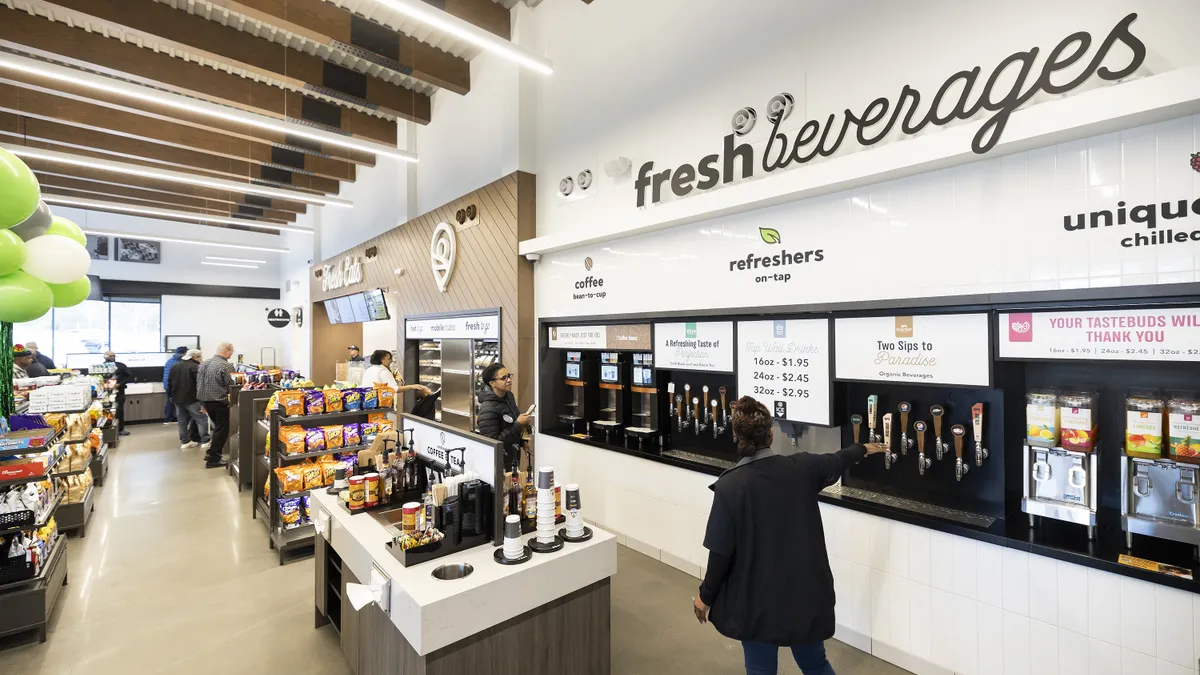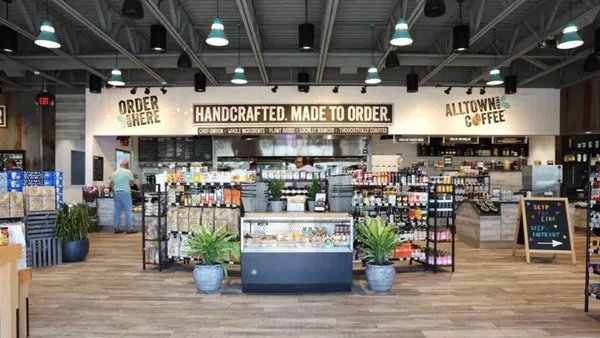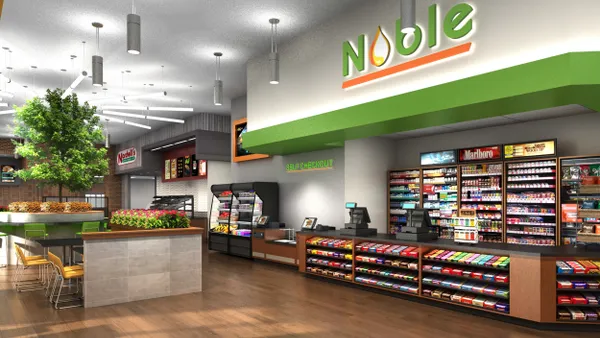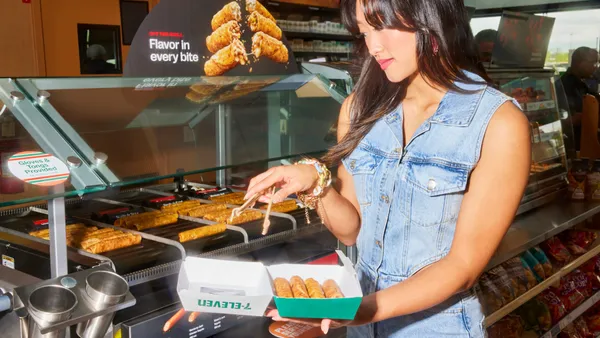Dive Brief:
- Maverik is expanding its food waste program to more stores and more food banks in its 12 states of operation alongside hunger relief nonprofit Feeding America, according to a press release.
- Launched April 2021, Maverik’s food waste program currently donates food from 87 stores to five network member food banks in Arizona, Colorado, Nevada, Utah and Wyoming.
- The move comes as record-high food prices, supply chain challenges, COVID-19 and sustainability concerns bring the importance of food waste management to focus, said Chuck Maggelet, president and chief adventure guide of Maverik, in a statement.
Dive Insight:
U.S. inflation for food hit 11.4% in August, the highest in over 40 years, according to data forecaster Trading Economics. These high food prices have resulted in food insecurity being as great as it was at the height of the pandemic, impacting families and individuals on the edge of poverty and trying to make ends meet, said Erika Thiem, chief supply chain officer for Feeding America, in an August webinar.
Each year, 108 billion pounds of food is wasted in the U.S., equating to 130 billion meals and more than $408 billion in food thrown away, according to Feeding America.
Since launching its food waste program last April, Maverik has donated 276,878 pounds of surplus food, which turned into 230,732 meals, Maverik said. Additionally, this donation, versus dumping product into a landfill, equals the removal of the CO2 from 79 passenger vehicles from being driven for one year.
The success of the pilot program drove Maverik’s decision to continually expand throughout its operating footprint, the company said.
Maverik, which is working with Feeding America on the program expansion, will continue to donate foods such as hot burritos, pizzas, hamburgers, and breakfast sandwiches; grab and go items like pre-made salads, cold sandwiches and wraps, parfaits, roller-grill tornados, cookies, muffins, candy, beef jerky and other snacks. Maverik packs up the food, freezes it and sends it out for distribution.
C-stores’ close proximity to consumers puts them in a good position to work with local food banks to help food insecurity, NACS has said. The association offers a step-by-step process on how c-stores can create a food donation program, which includes conducting inventory on the amount of food wasted in a day or week; partnering with a food rescue organization, like Feeding America; developing food waste procedures and trainings for staff; and getting customers involved through donation campaigns.
Feeding America has worked with several convenience store brands. At the onset of the pandemic, the nonprofit formed separate partnerships with Circle K, Casey’s General Stores and 7-Eleven to raise money or provide meals for families in need.



